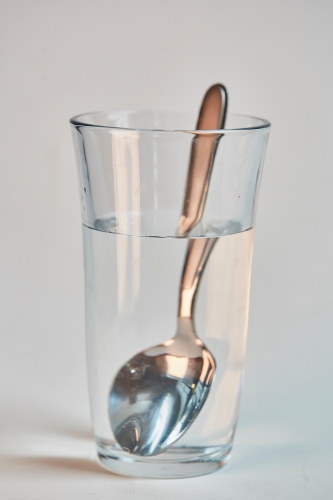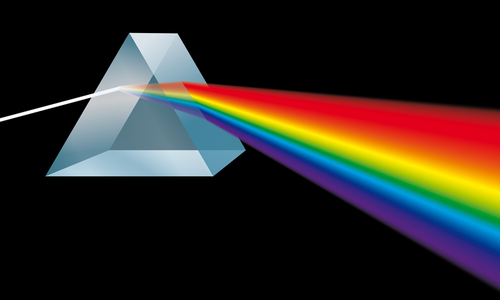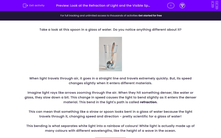Take a look at this spoon in a glass of water. Do you notice anything different about it?

When light travels through air, it goes in a straight line and travels extremely quickly. But, its speed changes slightly when it enters different materials.
Imagine light rays like arrows zooming through the air. When they hit something denser, like water or glass, they slow down a bit. This change in speed causes the light to bend slightly as it enters the denser material. This bend in the light's path is called refraction.
This can mean that something like a straw or spoon looks bent in a glass of water because the light travels through it, changing speed and direction - pretty scientific for a glass of water!
This bending is what separates white light into a rainbow of colours! White light is actually made up of many colours with different wavelengths, like the height of a wave in the ocean.

As white light (which contains all the colours of the rainbow) enters the prism, each colour bends by a different amount. This separates the colours out because colours with shorter wavelengths (like blue and violet) bend more than colours with longer wavelengths (like red and orange).
This shows us the beautiful visible spectrum – a rainbow of colours!
Do you know the seven colours in the visible spectrum? See if you can work them out!
This image shows how longer waves are colours like red and orange and shorter waves are colours like indigo and violet.

The visible spectrum is actually part of the larger electromagnetic spectrum, which has all the different sorts of waves in it, like radio waves or microwaves (they're a type of wave, not just great for heating up lunch!)
In this activity, we will be thinking about how light refraction can affect different objects and revising what we know about the visible spectrum!








